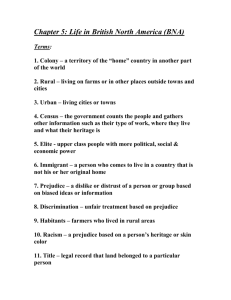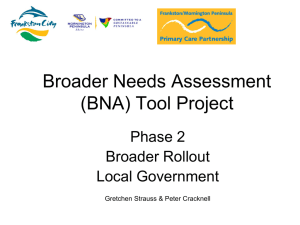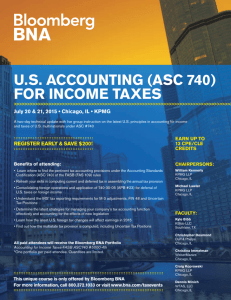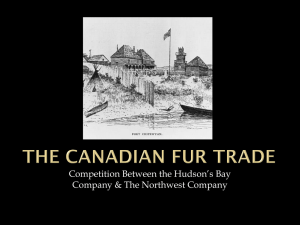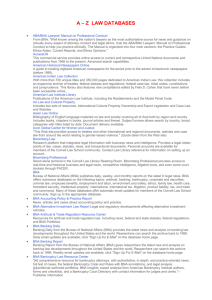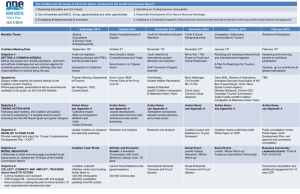Chapter 5 Life in British North America
advertisement
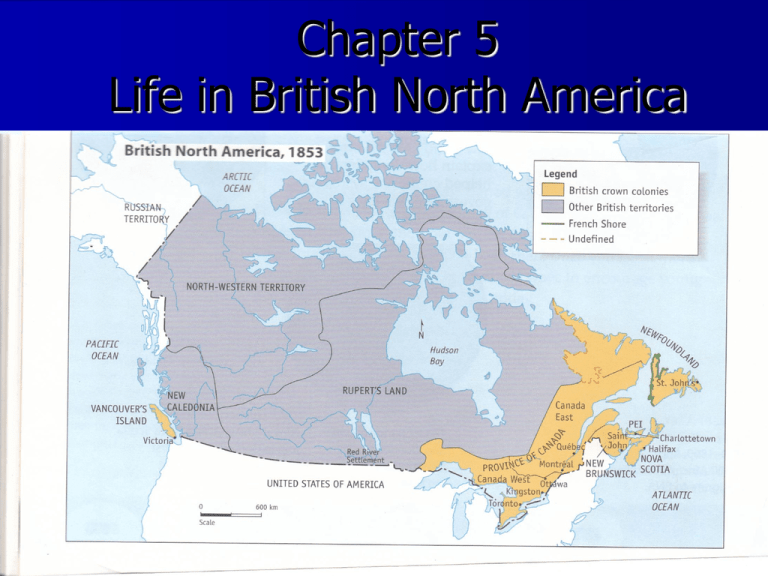
Chapter 5 Life in British North America Chapter 5: Outline “Life in British North America” Facts and Figures (p.77-78) • Politics • Population • Economics The Peoples of British North America • British and Irish (p.82-83) • French (p.84-85) • Aboriginal Peoples (p.86-87) • Black Colonists (p.88-89) Daily Life in British North America • Homes (p.90) • Transportation (p.91) • Health Care (p.92) • Education (p.93) • Pastimes (p.96) Case Study: The New Economy in BNA (p.79-81) Facts and Figures - Politics Vancouver Island, Nova Scotia, P.E.I, the Province of Canada, New Brunswick and NL. were all colonies of Great Britain. 1763 Royal Proclamation stated that no First Nations land could be taken without agreements. Rupert’s Land, North-Western Territory and New Caledonia were controlled by Britain and involved in the fur trading with the Hudson’s Bay Company. (HBC) NL. also included the ‘coast of Labrador.’ The French Shore along Newfoundland’s west coast The Province of Canada was made up of Canada East (French) and Canada West (British). Facts and Figures - Population Population of BNA in 1851 was about 2.5 million. Most of these people settled in the eastern colonies, such as: Montreal 58,000 people St. John, N.B. 30,000 people The majority of these people were Europeans while the minority consisted of First Nations People. The First Nations people mainly lived in the HBC’s lands and on Vancouver Island. Mid-1800s the population was 85% rural Facts and Figures - Economics During the mid-1800s the economy of BNA was mainly controlled by Europeans. The economy was pre-industrial and was based on resources such as fish, fur and timber. First Nations people struggled to survive the effects of European settlement. They participated in the HBC fur trade while also trying to maintain their traditional lifestyles. The New Economy in British North American (p. 79-81) 1. Province of Canada The economy of Canada was based on farming and lumbering. There was also manufacturing of furniture. Montreal was an important centre for business owners. 2. Newfoundland The economy was based on fishing. Most of the population lived in St. John’s, with some population along the coast. Labrador: fur-trading. 3. New Brunswick The primary industry in New Brunswick was shipbuilding, due to its central location in the region. Also, the Saint John River provided access to the interior of the region. Lumber was also an important industry. 4. Nova Scotia Sailors, fishers and shipbuilders were important in Nova Scotia. Some farming took place in the Annapolis Valley. 5. Prince Edward Island Shipbuilding was the strongest part of PEI’s economy in the mid-1800’s, but farming was also very important. 6. HBC Lands On Vancouver’s Island, Northwestern Territory, Rupert’s Land, and New Caledonia, the HBC had fur-trading posts, where the First Nations and Inuit exchanged fur pelts for trade goods (clothing, tools, pots/pants, etc.). The Peoples of British North America British and Irish (p.82-83) During the early 1800s immigrants from Great Britain and Ireland came to settle in BNA. By the mid-1800s 2/3 of the European population of BNA was of British or Irish heritage. Many people of British heritage (Scottish or English) were part of the elite class. The elite had more political, economic and social power than others. (Ex: the British merchants who controlled the fishing industry) Between 1815 and 1850 about 800,000 English, Scottish and Irish immigrants came to BNA, these groups were better able to fit-in with life in the colonies. The Irish experienced prejudice due to problems between their home country Ireland and Great Britain and as a result were often discriminated against when searching for jobs. The Peoples of British North America People of French Heritage Two main groups of French settlers: 1. French of Canada East 2. Acadians of P.E.I. Nova Scotia and New Brunswick Habitants are French farmers who lived in a rural areas. These farmers feared that the British and would become a majority and they would lose their rights. Acadia was the name given to the first French settlements in North America. It included, P.E.I. Nova Scotia and New Brunswick. The Acadians were the descendents of this area. These people lived by fishing and farming. The Peoples of British North America People of French Heritage Because France and England were at war, the British eventually sought control of Acadia. The British no longer trusted the Acadians and forced them to leave the Acadia this was called the Grande Derangement of 1755 (or ‘the Expulsion’). Between 8,000 to 10,000 Acadians were forced to leave their homes. Up to 50% were thought to have died as a result of the Expulsion. Many Acadians later returned, however they did face discrimination and had to start their lives over again. The Peoples of British North America Aboriginal Peoples The British gained control of the Aboriginal peoples and as a result they were experiencing racism. The British took control of their land, and they were left with poorquality land finding themselves facing poverty and starvation. Many First Nations populations also declined because they had little resistance to European diseases. The largest Metis community was the Red River Settlement, which was under the control of the HBC. (Red River carts were used to transport goods) The Peoples of British North America Black Colonists Many Black Colonists came to BNA as slavery was less and less common. During the time of the American Revolution many Black Loyalists came to BNA. These people had a hard time getting titles to their land. About 30,000 Black Loyalists arrived from the U.S. after slavery was outlawed in BNA. The Black colonists experienced discrimination. Daily Life in BNA Homes There were a wide variety of homes and furniture in BNA, for example: 1. Wealthy people in towns lived in large, elegant homes 2. Farmers lived in one-room cabins 3. First Nations peoples lived in traditional homes, such as the wigwams. Similarities in all homes included: Light from candles and lamps, heat from a fireplace or woodstove, no indoor plumbing so houses had outhouses and wells. Daily Life in BNA Homes Daily Life in BNA Transportation Transportation was one of the biggest challenges. Most people traveled by river and decided to settle along the river’s coastline. Travel on land was by foot, horse or oxen on rough roads. The first public railway opened in 1836 in Canada East. Daily Life in BNA Health Care Few families expected their children to grow to adults due to common life-threatening diseases. Epidemics were quite common. Health care for many was provided at home with traditional medicines. (ex. Flagroot used for colds) Minor injuries were often deadly, doctors did not get the chance to treat most illness and accidents. Daily Life in BNA Education School was not always considered the most important in a child’s life. Learning a trade or working on the family farm was often seem as the best way to get ahead. In the early years schools were run by religious organizations As time passed, publicly funded schools were established. These schools were open for all children. Main goal of school was to teach children about European culture and religion. Daily Life in BNA Pastimes Pastimes were similar in both urban and rural areas. Examples of pastimes included: - playing/watching outdoor sports (hockey) - doing crafts (needlework/carvings) - reading/storytelling or listening to music - playing games (snowsnake) People in cities could attend special events such as musical performances, sports clubs or plays.


